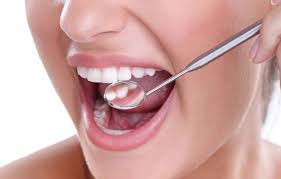
Oral cancer (also known as lip and oral cavity cancer) is a malignant tumor that affects lips, mouth structures such as gums, cheeks, the sky of the mouth, tongue (mainly the edges) and the region under the tongue. It is more common in men over 40 years of age, being the fourth most frequent tumor in males in the Southeast region. Most cases are diagnosed in advanced stages.
The posterior part of the tongue, tonsils and fibrous palate are part of the region called the oropharynx and its tumors have different behavior from oral cavity cancer.
As stated earlier, oral cancer affects men over the age of 40. A small group of younger, non-smoking and non-alcoholic patients may develop the disease. Studies have sought answers to the incidence in this group. However, there is still no answer on the subject. It is a disease that can be prevented in a simple way, provided that emphasis is placed on health promotion, increased access to health services and early diagnosis.
Abstaining from smoking and alcoholic beverages, a diet rich in healthy foods, good oral hygiene, and other attitudes such as these, decrease the chances of developing most malignant diseases, including tumors in the mouth, which are the most common types of head and neck cancer in Brazil. The World Health Organization (WHO) estimates that prevention can help reduce the incidence of cancer by up to 25% by 2025.
Speaking a little about the risk factors, we point out here the most important for the incidence of oral cancer:
* Smoking: Those who smoke cigarettes or use other tobacco products, such as straw cigarettes, Bali, clove or kreteks, roll smoke, chewing tobacco, cigars, pipes and hookah, among others, have a much higher risk of developing mouth and pharynx cancer than non-smokers. The higher the number of cigarettes smoked, the higher the risk of cancer.
* Regular consumption of alcoholic beverages.
* Unprotected sun exposure poses an important risk to lip cancer.
* Excess body fat increases the risk of oral cancer.
* Works with intense exposure to cutting oil, asbestos, wood dust, leather dust, cement dust, cereals, textile and leather, asbestos, formaldehyde, silica, coal soot, organic solvents and pesticides is associated with the development of oral cancer.
* Workers in agriculture and animal husbandry, textile industry, leather, metallurgical, rubber, civil construction, mechanical workshop, foundry, coal mining, as well as professional hairdressers, carpenters, plumbers, carpet installers, glass moulders and molders, potters, butchers, barbers, miners, flower beds, painters and automobile mechanics may also present increased risk of disease development.
* HPV virus infection is related to some cases of oropharynx cancer.
The main signs that should be observed are:
* Lesions (wounds) in the oral cavity or lips that do not heal for more than 15 days, which may be bleeding and are growing.
* Red or off-white spots/plaques on the tongue, gums, mouth sky or cheeks
* Nodules (lumps) in the neck
* Persistent hoarseness
In the most advanced cases it is observed:
* Difficulty chewing and swallowing
* Difficulty in speaking
* Feeling that there's something stuck in the throat
* Difficulty moving the tongue
It is essential to be aware of the emergence of any warning sign. In the face of any injury that does not scar within a maximum period of 15 days, the dentist or doctor should be searched. Take advantage of consultations with the dentist to ask questions and, mainly, report any different sign or symptom. People at higher risk for developing oral cancer (smokers and frequent consumers of alcoholic beverages) should be extra careful and make periodic visits to the dentist. Once faced with a suspected lesion, biopsy (examination of a fragment of the lesion) should be performed, and the patient referred to a specialized physician.
The diagnosis of oral cavity cancer can usually be made with clinical examination (visual), but confirmation depends on biopsy. This procedure, in the vast majority of cases, can be done on an outpatient basis, with local anesthesia, by a trained professional. Some imaging tests, such as computed tomography, also help in the diagnosis, and mainly help to evaluate the extent of the tumor. The clinical examination associated with biopsy, with the study of the lesion by tomography (in the indicated cases) allow the surgeon to define the appropriate treatment. Very initial lesions can be evaluated without the need for imaging at first. The initial diagnosis allows treatment with better functional results, since tumors diagnosed in more advanced stages will imply more aggressive treatments with a higher chance of sequelae.
Treatment in the vast majority of cases is surgical, both for smaller lesions, with simpler surgeries, and for larger tumors. The Head and Neck Surgeon is the professional who will evaluate the stage of the disease. This evaluation, associated with complementary tests, will determine the most indicated treatment. Radiotherapy and chemotherapy are indicated when surgery is not possible or when surgical treatment would bring important and complicated functional sequelae for functional rehabilitation and the patient's quality of life.
Surgery usually consists of removing the area affected by the tumor associated with removal of lymph nodes from the neck and some type of reconstruction when necessary. In the simplest lesions, it is often necessary only to remove the lesion. In the most complex cases, in addition to surgical treatment, radiotherapy is required to complement the treatment and obtain better curative results. At all stages of treatment, the interdisciplinary aspect (with the participation of several health professionals) is important in order to prevent complications and sequelae.
It is possible to prevent and make the early diagnosis of oral cancer in the chair of the dentist. This professional is able to detect signs such as whitish plaques, reddish lesions and wounds. When these lesions do not heal in less than 15 days, more accurate investigation is required.